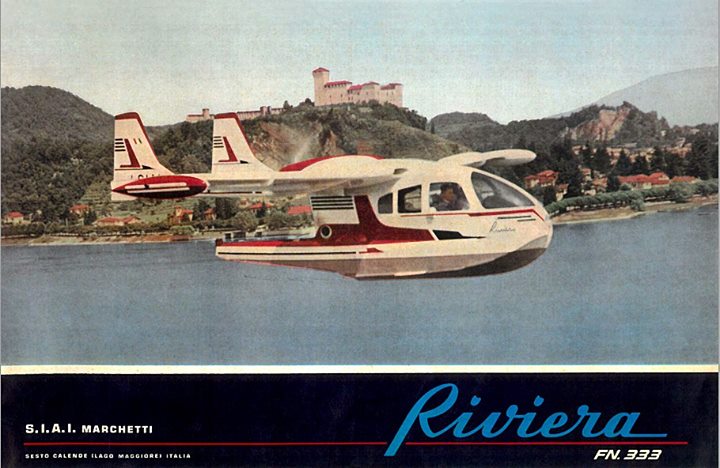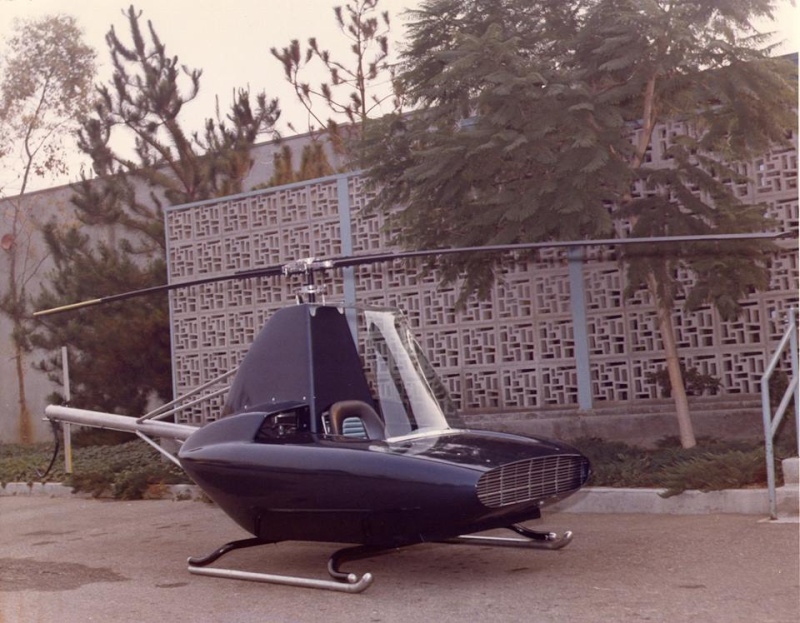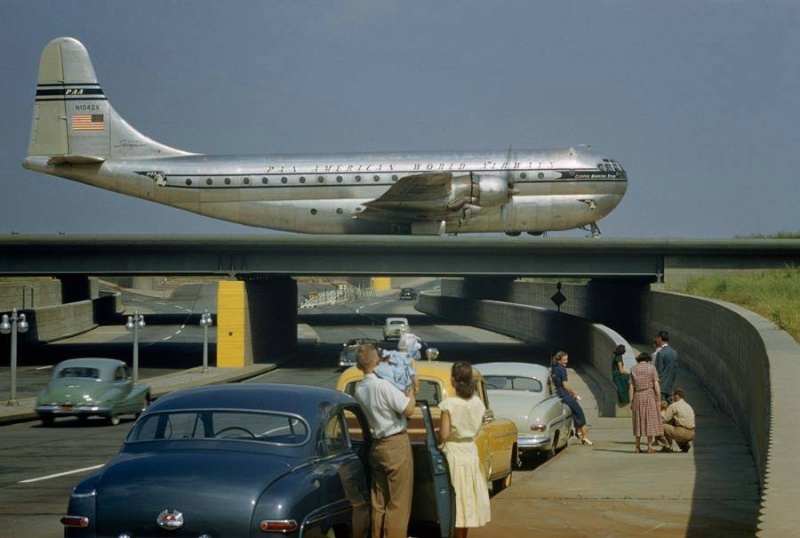Avions 1950's, futuristes et vaisseaux spaciaux - Vintage Spaceships, Starships and futuristic planes.
5 participants
Traditional Kustom Hot Rod and Vintage Culture and design :: Sujets Divers & variés / various topics
Page 1 sur 2
Page 1 sur 2 • 1, 2 
 Avions 1950's, futuristes et vaisseaux spaciaux - Vintage Spaceships, Starships and futuristic planes.
Avions 1950's, futuristes et vaisseaux spaciaux - Vintage Spaceships, Starships and futuristic planes.
The NCC-1701, 1930: the pre-Starship Enterprise

Well, what is really was, or what this was intended to be in this memory of a possible aviation future–or naval future, as this airship was really a flying boat, an "amphibian, a dirigible, a gyrocopter ….an airplane". A ship, really, trying to judge the size of the thing by the position of the portholes/windows–the thing was big, and the "single wing, rotating disk-shaped affair filled with gas or hot air" was even bigger. We read here that the disk was "turned by a gasoline engine" which was located in the center of the ship, leaving still plenty of room for "quarters" for the crew and passengers, making for what the inventor thought was an easy ascent and then, using the lifting device as a parachute, and then having a parachute-y descent, soft and simple.
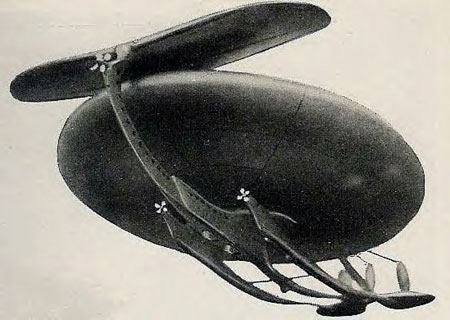
Its hard to judge the size of the machine, but it looks like there are 40-50 portholes or windows running the length of the ship, and so I'd guess that the fuselage of the craft was 150 feet long, which was about half of its overall length, making it about 300 feet overall. The disk then could be 150-200 feet in diameter, giving it an area of close to one acre. Big.
And so:



Well, what is really was, or what this was intended to be in this memory of a possible aviation future–or naval future, as this airship was really a flying boat, an "amphibian, a dirigible, a gyrocopter ….an airplane". A ship, really, trying to judge the size of the thing by the position of the portholes/windows–the thing was big, and the "single wing, rotating disk-shaped affair filled with gas or hot air" was even bigger. We read here that the disk was "turned by a gasoline engine" which was located in the center of the ship, leaving still plenty of room for "quarters" for the crew and passengers, making for what the inventor thought was an easy ascent and then, using the lifting device as a parachute, and then having a parachute-y descent, soft and simple.

Its hard to judge the size of the machine, but it looks like there are 40-50 portholes or windows running the length of the ship, and so I'd guess that the fuselage of the craft was 150 feet long, which was about half of its overall length, making it about 300 feet overall. The disk then could be 150-200 feet in diameter, giving it an area of close to one acre. Big.
And so:


Dernière édition par Predicta le Mar 23 Déc - 7:00, édité 1 fois
_________________
We don't care the People Says , Rock 'n' roll is here to stay - Danny & the Juniors - 1958
 Planet Satellite
Planet Satellite
The Planet Satellite was a British light aircraft of the late 1940s. Designed to exploit new technology, the aircraft was abandoned after two crashes although the innovative fuselage was later incorporated into a helicopter prototype.

The Planet Satellite designed by Major J.N. Dundas Heenan was a futuristic looking four-seater built of magnesium alloy in a true monocoque "teardrop" shaped fuselage with no internal reinforced structure.The Satellite was powered by a 250 hp de Havilland Gipsy Queen 31 mounted amidships driving a two-blade Aeromatic "pusher" airscrew in the tail. Other notable features included "butterfly" tails and a retractable tricycle undercarriage, with the nosewheel retracting into a reinforced keel that ran the length of the underside of the fuselage.

Breaking with conventional design and manufacturing conventions, Heenan declared in the July 1948 Aviation News issue, that the 400 drawings made were in stark contrast with the standard of approximately 3,000 drawings required for a project of that complexity.[3] Financing for the Satellite was equally novel with a partnership established with the Distillers Company Ltd. (makers of Gordon's Gin and Black Label Whisky) wherein the Planet Aircraft Company operated as a subsidiary of a liquor company.
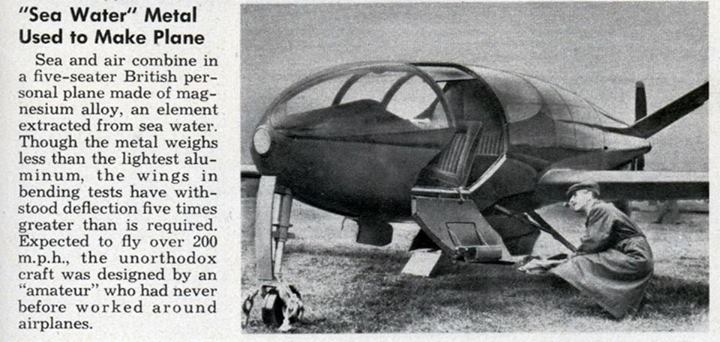
Built in the Robinson Redwing factory at Croydon, Purley Way, Surrey in 1947, the first prototype was taken to Redhill in 1948. The sleek light aircraft appeared at the S.B.A.C show at Farnborough in September 1948 and received the registration G-ALOI in April 1949.

The Planet Satellite designed by Major J.N. Dundas Heenan was a futuristic looking four-seater built of magnesium alloy in a true monocoque "teardrop" shaped fuselage with no internal reinforced structure.The Satellite was powered by a 250 hp de Havilland Gipsy Queen 31 mounted amidships driving a two-blade Aeromatic "pusher" airscrew in the tail. Other notable features included "butterfly" tails and a retractable tricycle undercarriage, with the nosewheel retracting into a reinforced keel that ran the length of the underside of the fuselage.

Breaking with conventional design and manufacturing conventions, Heenan declared in the July 1948 Aviation News issue, that the 400 drawings made were in stark contrast with the standard of approximately 3,000 drawings required for a project of that complexity.[3] Financing for the Satellite was equally novel with a partnership established with the Distillers Company Ltd. (makers of Gordon's Gin and Black Label Whisky) wherein the Planet Aircraft Company operated as a subsidiary of a liquor company.

Built in the Robinson Redwing factory at Croydon, Purley Way, Surrey in 1947, the first prototype was taken to Redhill in 1948. The sleek light aircraft appeared at the S.B.A.C show at Farnborough in September 1948 and received the registration G-ALOI in April 1949.
_________________
We don't care the People Says , Rock 'n' roll is here to stay - Danny & the Juniors - 1958
 Re: Avions 1950's, futuristes et vaisseaux spaciaux - Vintage Spaceships, Starships and futuristic planes.
Re: Avions 1950's, futuristes et vaisseaux spaciaux - Vintage Spaceships, Starships and futuristic planes.
The Chief Test Pilot at RAE Farnborough, Group Captain H.J. Wilson (holder of the World speed Record in the Gloster Meteor), after several long runs down the runway, managed to get the Satellite airborne at Blackbushe. The first "hop" was followed by the collapse of the undercarriage. After repairs, the prototype was flown off the ground and after reaching an altitude of barely 20 ft was put down on the ground gently but nonetheless, the main keel had been cracked by the force of the landing. The conclusion of the Air Registration board investigating the "accident" was that the aircraft was badly understressed and would necessitate a complete redesign.
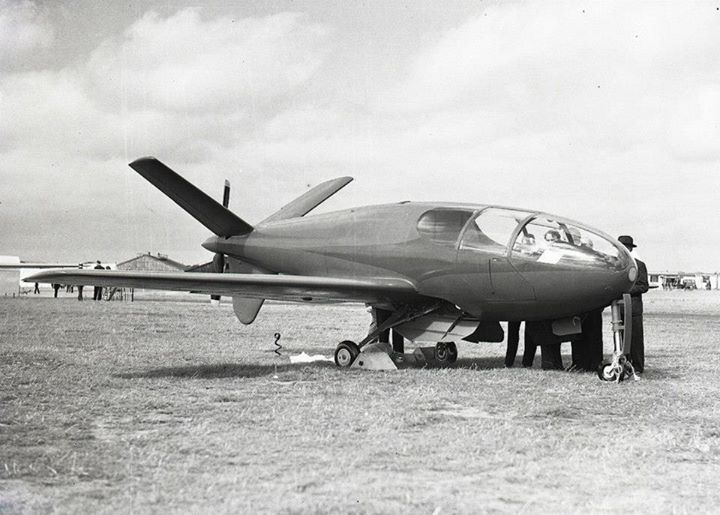
The manufacturers had already begun the production of a second prototype and despite an investment of £100,000, chose to wind down the program with no further attempts to fly the Planet Satellite.

The second prototype, registered G-ALXP was abandoned but the completed fuselage was incorporated into the Firth Helicopter, built in 1952 at Thame. The single "flying" Satellite languished at Redhill until 1958 when it was unceremoniously broken up.

General characteristics
Crew: 1
Capacity: 3 passengers
Length: 26 ft 3 in (8.00 m)
Wingspan: 33 ft 6 in (10.21 m)
Height: 9 ft 3 in (2.82 m)
Wing area: 153 sq ft (14.2 m2)
Airfoil: NACA 23000 series
Empty weight: 1,600 lb (726 kg)
Gross weight: 2,905 lb (1,318 kg)
Powerplant: 1 × de Havilland Gipsy Queen Inline piston, 220 hp (160 kW)
Performance
Maximum speed: 208 mph (335 km/h; 181 kn)
Cruise speed: 191 mph (166 kn; 307 km/h)
Range: 1,000 mi (869 nmi; 1,609 km)
Service ceiling: 22,000 ft (6,706 m)
Rate of climb: 1,450 ft/min (7.4 m/s

http://en.wikipedia.org/wiki/Planet_Satellite

The manufacturers had already begun the production of a second prototype and despite an investment of £100,000, chose to wind down the program with no further attempts to fly the Planet Satellite.

The second prototype, registered G-ALXP was abandoned but the completed fuselage was incorporated into the Firth Helicopter, built in 1952 at Thame. The single "flying" Satellite languished at Redhill until 1958 when it was unceremoniously broken up.

General characteristics
Crew: 1
Capacity: 3 passengers
Length: 26 ft 3 in (8.00 m)
Wingspan: 33 ft 6 in (10.21 m)
Height: 9 ft 3 in (2.82 m)
Wing area: 153 sq ft (14.2 m2)
Airfoil: NACA 23000 series
Empty weight: 1,600 lb (726 kg)
Gross weight: 2,905 lb (1,318 kg)
Powerplant: 1 × de Havilland Gipsy Queen Inline piston, 220 hp (160 kW)
Performance
Maximum speed: 208 mph (335 km/h; 181 kn)
Cruise speed: 191 mph (166 kn; 307 km/h)
Range: 1,000 mi (869 nmi; 1,609 km)
Service ceiling: 22,000 ft (6,706 m)
Rate of climb: 1,450 ft/min (7.4 m/s

http://en.wikipedia.org/wiki/Planet_Satellite
_________________
We don't care the People Says , Rock 'n' roll is here to stay - Danny & the Juniors - 1958
 Hughes XH-17 "Flying Crane" & XH-28
Hughes XH-17 "Flying Crane" & XH-28

The XH-17 "Flying Crane" was the first helicopter project for the helicopter division of Hughes Aircraft. The XH-17, which had a two-bladed main rotor system with a diameter of 134 feet (41 m), was capable of flying at a gross weight of more than 50,000 pounds (23,000 kg).

The XH-17 was a heavy-lift rotorcraft that was designed to lift loads in excess of 15 metric tons. To speed construction, parts of the XH-17 were scavenged from other aircraft. The front wheels came from a B-25 Mitchell and the rear wheels from a C-54 Skymaster. The fuel tank was a bomb bay-mounted unit from a B-29 Superfortress. The cockpit was from a Waco CG-15 and the tail rotor from a Sikorsky H-19 was used for yaw control.

In the late 1940s, Hughes developed an interest in helicopters. In August 1947, helicopter manufacturer Kellett sold his design for the giant XH-17 Sky Crane to Hughes, who commissioned the development of the XH-17 Flying Crane research vehicle. In 1948 the XH-17 began to take shape. The giant helicopter was tested in Culver City, California over a three-year period beginning in 1952. The XH-17 flew in 1953 at a gross weight in excess of 50,000 pounds (23,000 kg). It still holds the record for flying with the world's largest rotor system. Only one unit was built, since the aircraft was too cumbersome and inefficient to warrant further development.

The propulsion system was unusual. Two General Electric J35 turbojet engines were used, sending bleed air up through the rotor hub. The blades were hollow, and the hot compressed air traveled through the blades to tip jets where fuel was injected. In flight the rotors spun at a sedate 88 rpm. Since the rotor was driven at the tips rather than the hub, little torque compensation was required. Thus, the XH-17 had a very small tail rotor compared to its main rotor. This drive system was inefficient, limiting the test aircraft to a range of only 40 miles (64 km).
The XH-28 was a derivative, with a maximum weight of 104,000 pounds (47,000 kg). Though a wooden mockup of the design was made, the program was cancelled and none were built.
General characteristics
Crew: 3 (pilot, mechanic and in-flight test engineer)
Length: 53 ft 3 in (16.25 m)
Rotor diameter: 129 ft 11 in (39.62 m)
Height: 30 ft 2 in (9.17 m)
Empty weight: 28,563 lb (12,956 kg)
Loaded weight: 31,270 lb (14,184 kg)
Useful load: 10,284 lb (4,665 kg)
Max. takeoff weight: 43,500 lb (19,731 kg)
Powerplant: 2 × General Electric J35 turbojets
Performance
Maximum speed: 90 mph (145 km/h)
Cruise speed: 85 mph (137 km/h)
Range: 40 mi (64 km)
Service ceiling: 13,100 ft (3,995 m)
Rate of climb: 1650 ft/min (8.4 m/s)
Disc loading: 2.34 lb/ft² (11.5 kg/m²)
http://en.wikipedia.org/wiki/Hughes_XH-17
_________________
We don't care the People Says , Rock 'n' roll is here to stay - Danny & the Juniors - 1958
 Re: Avions 1950's, futuristes et vaisseaux spaciaux - Vintage Spaceships, Starships and futuristic planes.
Re: Avions 1950's, futuristes et vaisseaux spaciaux - Vintage Spaceships, Starships and futuristic planes.
Le Flying Crane est toujours en service depuis le temps ...



_________________
In Old School I Trust ...
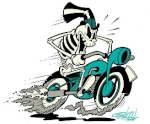
kriskap13- Messages : 112
Date d'inscription : 19/09/2013
 Re: Avions 1950's, futuristes et vaisseaux spaciaux - Vintage Spaceships, Starships and futuristic planes.
Re: Avions 1950's, futuristes et vaisseaux spaciaux - Vintage Spaceships, Starships and futuristic planes.
Mc Donnell XF-85 Goblin
Le McDonnell XF-85 Goblin fut conçu, dès 1945, pour assurer la protection des bombardiers intercontinentaux, comme le B-36 Peacemaker. Ce programme initié par l’US Air Force visait à produire un chasseur parasite, c’est-à-dire attaché au bombardier car les escorteurs de l’époque ne pouvait assurer le même rayon d’action que le B-36.
Cet avion était minuscule avec seulement 1,64 m de large, 3,25 m de haut et 4,53 m de long. Et il avait une envergure d’aile déployée de 6,44 m. C’était un monoplan aux ailes médianes qui comportait un étrange système d’accroches installé au-dessous du fuselage et des empennages aux formes peu communes. Cet appareil devait opérer accroché sous le ventre ou l’aile du bombardier et devait se « ré-accrocher » une fois sa chasse effectuée à l’aide d’un trapèze escamotable.
Seulement 2 Goblin ont été construits, car le programme d’essais fut abandonné rapidement, à la fin de 1949, car le réapprovisionnement en combustible par des avions ravitailleurs commençait à être mis au point permettant au chasseur d’assurer une escorte au-delà de leur rayon d’action normal.
Armement : 4 mitrailleuses de 12.7mm
Poids en charge :2063 kg
Vitesse max. :1046 km/h au niveau de la mer
Plafond pratique :14250 m
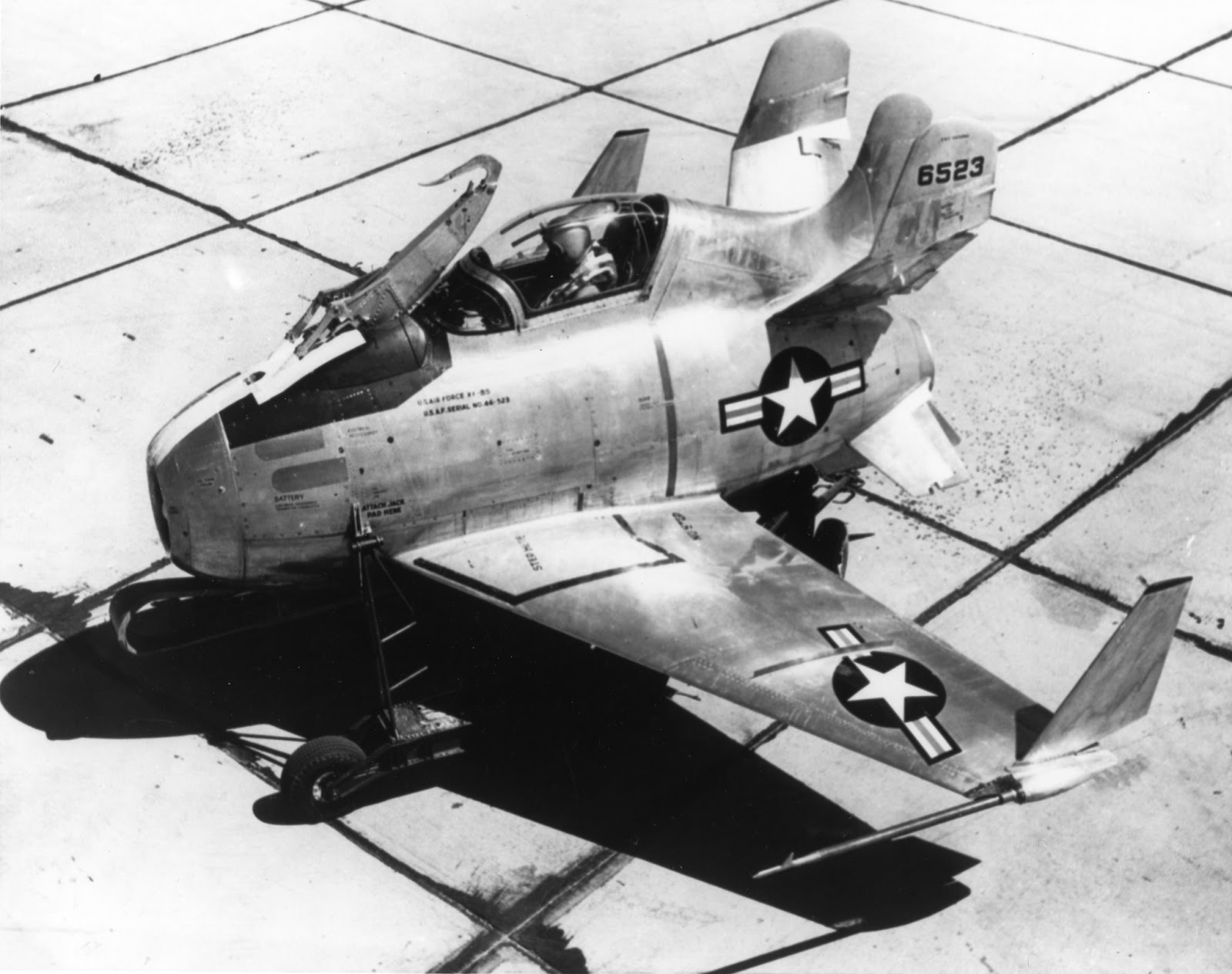
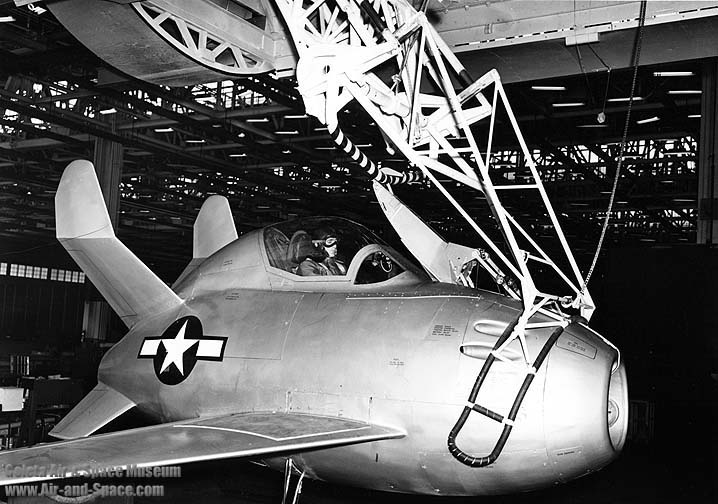

Le McDonnell XF-85 Goblin fut conçu, dès 1945, pour assurer la protection des bombardiers intercontinentaux, comme le B-36 Peacemaker. Ce programme initié par l’US Air Force visait à produire un chasseur parasite, c’est-à-dire attaché au bombardier car les escorteurs de l’époque ne pouvait assurer le même rayon d’action que le B-36.
Cet avion était minuscule avec seulement 1,64 m de large, 3,25 m de haut et 4,53 m de long. Et il avait une envergure d’aile déployée de 6,44 m. C’était un monoplan aux ailes médianes qui comportait un étrange système d’accroches installé au-dessous du fuselage et des empennages aux formes peu communes. Cet appareil devait opérer accroché sous le ventre ou l’aile du bombardier et devait se « ré-accrocher » une fois sa chasse effectuée à l’aide d’un trapèze escamotable.
Seulement 2 Goblin ont été construits, car le programme d’essais fut abandonné rapidement, à la fin de 1949, car le réapprovisionnement en combustible par des avions ravitailleurs commençait à être mis au point permettant au chasseur d’assurer une escorte au-delà de leur rayon d’action normal.
Armement : 4 mitrailleuses de 12.7mm
Poids en charge :2063 kg
Vitesse max. :1046 km/h au niveau de la mer
Plafond pratique :14250 m


_________________
In Old School I Trust ...

kriskap13- Messages : 112
Date d'inscription : 19/09/2013
 Re: Avions 1950's, futuristes et vaisseaux spaciaux - Vintage Spaceships, Starships and futuristic planes.
Re: Avions 1950's, futuristes et vaisseaux spaciaux - Vintage Spaceships, Starships and futuristic planes.
On dirait un piranha volant 
_________________
We don't care the People Says , Rock 'n' roll is here to stay - Danny & the Juniors - 1958
 Re: Avions 1950's, futuristes et vaisseaux spaciaux - Vintage Spaceships, Starships and futuristic planes.
Re: Avions 1950's, futuristes et vaisseaux spaciaux - Vintage Spaceships, Starships and futuristic planes.
Douglas X-3 Stiletto
Les X-Planes sont une série d'aéronefs expérimentaux, (avions pilotés ou non, hélicoptères et fusées) développés par les États-Unis en vue d'étudier et de développer des technologies novatrices ou de nuveaux concepts aérodynamiques.
Certains projets ne dépassèrent pas le stade de la planche à dessin, d'autres ont été abandonnés à différentes phases de développement, d'autres encore ont donné naissance à de prolifiques séries d'aéronefs
Le Stiletto est un avion experimental américain au fuselage effilé et aux ailes trapues produit par la Douglas Aircraft Company au début des années 1950. Il doit servir à la recherche sur les vols supersoniques prolongés et est le premier avion à utiliser des alliages de titane sur la majeure partie du revêtement. Il souffre cependant d'une sérieuse sous-motorisation et ne peut jamais dépasser le mur du son en vol horizontal. Bien que l'avion ne permet pas de remplir les objectifs du programme, les données récoltées lors des vols d'essai sont utilisées par les ingénieurs de Lockheed pour la conception d'un futur intercepteur qui sera doté d'une voilure similaire à celle du X-3.
Vitesse maximale : 1 125 km/h
Plafond : 11 600 m
Rayon d'action : 800 km


A cette époque les lacs salés n'ont pas vu que des hordes de rodders en tous genres ...
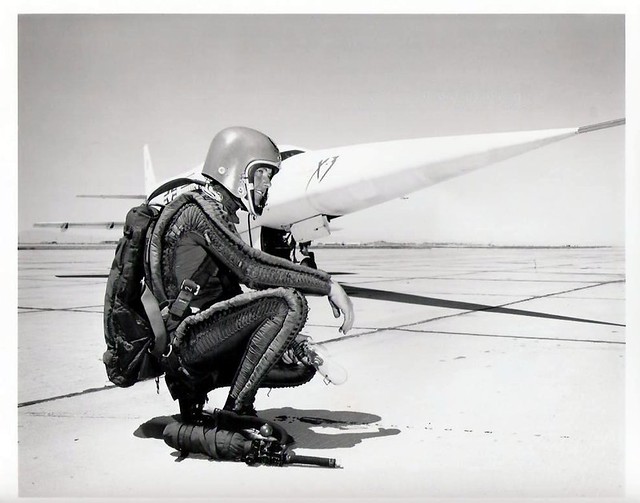
Avec la tenue qui va bien
Les X-Planes sont une série d'aéronefs expérimentaux, (avions pilotés ou non, hélicoptères et fusées) développés par les États-Unis en vue d'étudier et de développer des technologies novatrices ou de nuveaux concepts aérodynamiques.
Certains projets ne dépassèrent pas le stade de la planche à dessin, d'autres ont été abandonnés à différentes phases de développement, d'autres encore ont donné naissance à de prolifiques séries d'aéronefs
Le Stiletto est un avion experimental américain au fuselage effilé et aux ailes trapues produit par la Douglas Aircraft Company au début des années 1950. Il doit servir à la recherche sur les vols supersoniques prolongés et est le premier avion à utiliser des alliages de titane sur la majeure partie du revêtement. Il souffre cependant d'une sérieuse sous-motorisation et ne peut jamais dépasser le mur du son en vol horizontal. Bien que l'avion ne permet pas de remplir les objectifs du programme, les données récoltées lors des vols d'essai sont utilisées par les ingénieurs de Lockheed pour la conception d'un futur intercepteur qui sera doté d'une voilure similaire à celle du X-3.
Vitesse maximale : 1 125 km/h
Plafond : 11 600 m
Rayon d'action : 800 km


A cette époque les lacs salés n'ont pas vu que des hordes de rodders en tous genres ...

Avec la tenue qui va bien
_________________
In Old School I Trust ...

kriskap13- Messages : 112
Date d'inscription : 19/09/2013
 Re: Avions 1950's, futuristes et vaisseaux spaciaux - Vintage Spaceships, Starships and futuristic planes.
Re: Avions 1950's, futuristes et vaisseaux spaciaux - Vintage Spaceships, Starships and futuristic planes.
Il est hyper beau on dirait un vaisseau des Thunderbirds 
_________________
We don't care the People Says , Rock 'n' roll is here to stay - Danny & the Juniors - 1958
 Re: Avions 1950's, futuristes et vaisseaux spaciaux - Vintage Spaceships, Starships and futuristic planes.
Re: Avions 1950's, futuristes et vaisseaux spaciaux - Vintage Spaceships, Starships and futuristic planes.
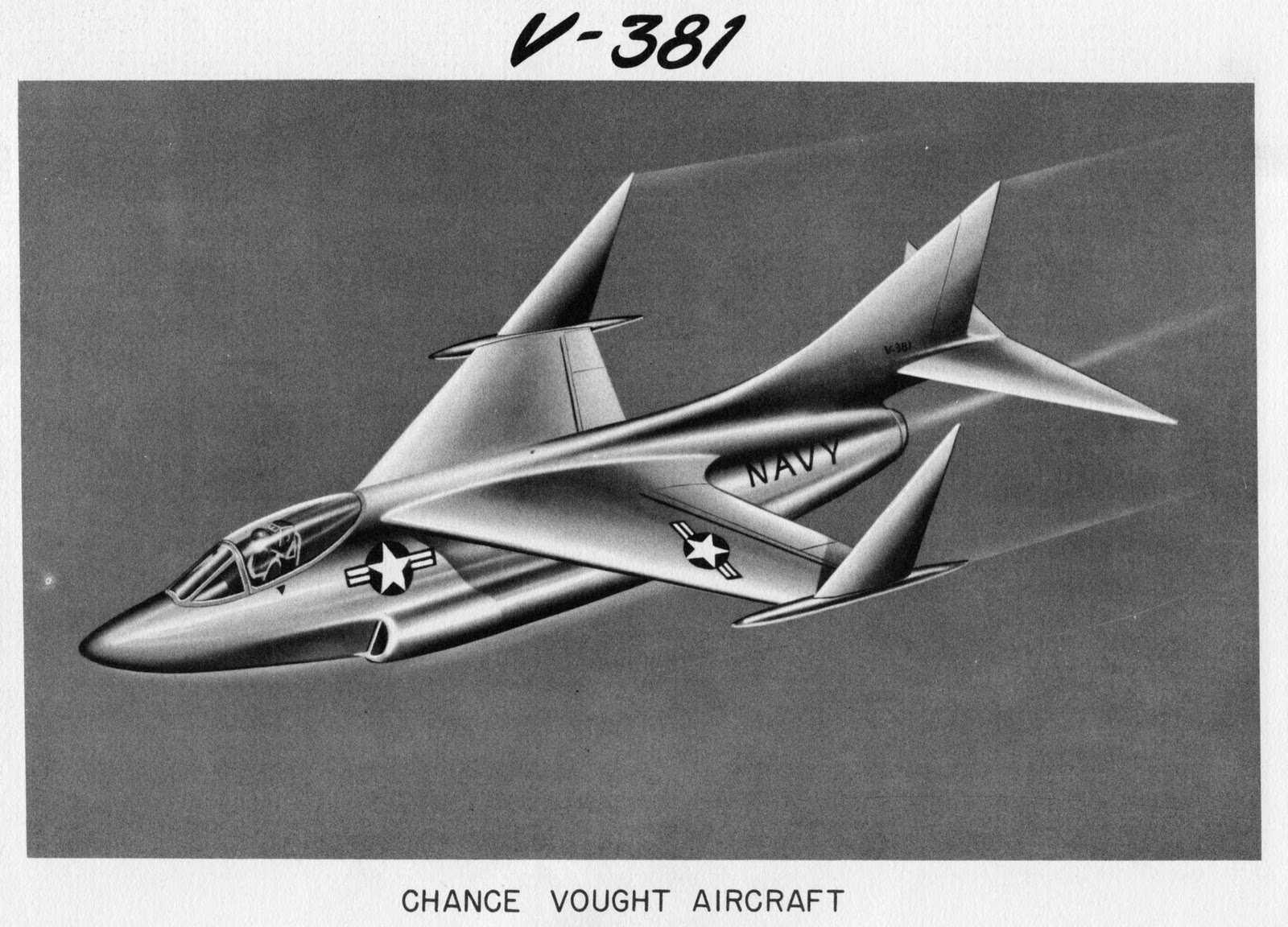
_________________
In Old School I Trust ...

kriskap13- Messages : 112
Date d'inscription : 19/09/2013
 Nardi FN.333 Riviera
Nardi FN.333 Riviera
The Italian Riviera amphibian was originally designed and flight-tested by Nardi S.A. per Costruzioni Aeronautiche under the designation FN.333.
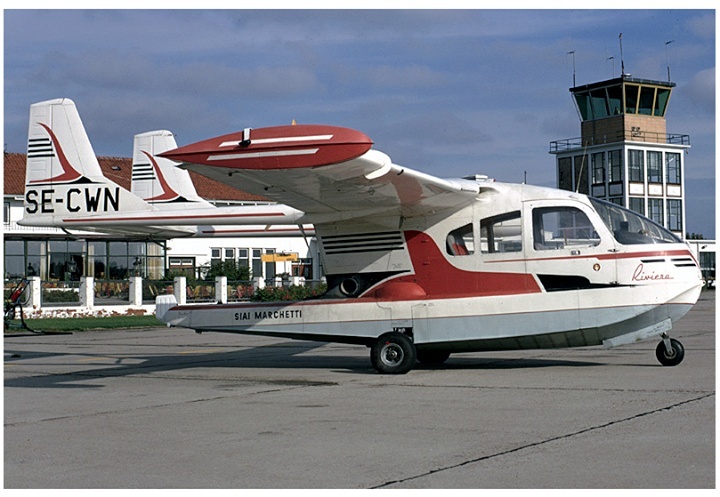
The Nardi concern was established by the four Nardi brothers in Milan in 1933. Their first product, the FN.305, first flew in 1935. The Nardi factory at Loreto was almost completely destroyed during WW2. After the war, their new factory was built at Aeroporto Forlanini, Milan. In addition to aircraft manufacture, the company also specialized in production of wheels, brakes, retractable landing gears, hydraulic and electric aircraft controls, fuel pumps, armament installations and aircraft accessories generally.

Nardi's first post war aircraft was the FN.333 all-metal three seat amphibian. The first prototype FN.333, I-KISS, made its maiden flight on 4 December 1952, powered by a 145 hp Continental fan-cooled engine. The production development model FN.333-S was planned to have four seat, a 225 hp Continental C125 engine and have folding wings. The outer sections of the wings were to fold in two halves, one section folding upwards and the other folding downwards with the wing tip floats, to give stability on water.

In March 1959 SIAI Marchetti acquired the manufacturing rights from Nardi. At their plant in Sesto Calende, Varese near Milano (Italy) SIAI Marchetti started the manufacture of a first series of 10 Rivieras. The first SIAI Marchetti manufactured Riviera was rolled out in February 1962, and by January 1963 four aircraft had been delivered to customers. The production version now had a 250 hp Continental IO-470-P engine, with fuel injection.

When the Riviera was placed on the American market in 1961 by Lane-SIAI Company of Dallas, ServAir Inc. of Detroit became the dealer for the Riviera in the Michigan area. ServAir was a company owned by Mr. George H. Paquette. ServAir received the first production model on 13 July 1962, when it arrived aboard ship at Newark, New York, complete and ready to fly.

The majority of the production Rivieras were sold to the USA, where Southwest Airmotive received the aircraft for assembly before delivery to their US owners. North Star Company, Newark, NJ, was marketing the Rivieras in America.

In 1960 an Italian-piloted Riviera set 6 FAI altitude and speed records for her class of flying boats and amphibians. A pure flying boat version, designated FN.333 W, was projected but never built.

The Nardi concern was established by the four Nardi brothers in Milan in 1933. Their first product, the FN.305, first flew in 1935. The Nardi factory at Loreto was almost completely destroyed during WW2. After the war, their new factory was built at Aeroporto Forlanini, Milan. In addition to aircraft manufacture, the company also specialized in production of wheels, brakes, retractable landing gears, hydraulic and electric aircraft controls, fuel pumps, armament installations and aircraft accessories generally.

Nardi's first post war aircraft was the FN.333 all-metal three seat amphibian. The first prototype FN.333, I-KISS, made its maiden flight on 4 December 1952, powered by a 145 hp Continental fan-cooled engine. The production development model FN.333-S was planned to have four seat, a 225 hp Continental C125 engine and have folding wings. The outer sections of the wings were to fold in two halves, one section folding upwards and the other folding downwards with the wing tip floats, to give stability on water.

In March 1959 SIAI Marchetti acquired the manufacturing rights from Nardi. At their plant in Sesto Calende, Varese near Milano (Italy) SIAI Marchetti started the manufacture of a first series of 10 Rivieras. The first SIAI Marchetti manufactured Riviera was rolled out in February 1962, and by January 1963 four aircraft had been delivered to customers. The production version now had a 250 hp Continental IO-470-P engine, with fuel injection.

When the Riviera was placed on the American market in 1961 by Lane-SIAI Company of Dallas, ServAir Inc. of Detroit became the dealer for the Riviera in the Michigan area. ServAir was a company owned by Mr. George H. Paquette. ServAir received the first production model on 13 July 1962, when it arrived aboard ship at Newark, New York, complete and ready to fly.

The majority of the production Rivieras were sold to the USA, where Southwest Airmotive received the aircraft for assembly before delivery to their US owners. North Star Company, Newark, NJ, was marketing the Rivieras in America.

In 1960 an Italian-piloted Riviera set 6 FAI altitude and speed records for her class of flying boats and amphibians. A pure flying boat version, designated FN.333 W, was projected but never built.
_________________
We don't care the People Says , Rock 'n' roll is here to stay - Danny & the Juniors - 1958
 Re: Avions 1950's, futuristes et vaisseaux spaciaux - Vintage Spaceships, Starships and futuristic planes.
Re: Avions 1950's, futuristes et vaisseaux spaciaux - Vintage Spaceships, Starships and futuristic planes.
_________________
We don't care the People Says , Rock 'n' roll is here to stay - Danny & the Juniors - 1958
 Re: Avions 1950's, futuristes et vaisseaux spaciaux - Vintage Spaceships, Starships and futuristic planes.
Re: Avions 1950's, futuristes et vaisseaux spaciaux - Vintage Spaceships, Starships and futuristic planes.
_________________
We don't care the People Says , Rock 'n' roll is here to stay - Danny & the Juniors - 1958
 Re: Avions 1950's, futuristes et vaisseaux spaciaux - Vintage Spaceships, Starships and futuristic planes.
Re: Avions 1950's, futuristes et vaisseaux spaciaux - Vintage Spaceships, Starships and futuristic planes.
_________________
We don't care the People Says , Rock 'n' roll is here to stay - Danny & the Juniors - 1958
 Re: Avions 1950's, futuristes et vaisseaux spaciaux - Vintage Spaceships, Starships and futuristic planes.
Re: Avions 1950's, futuristes et vaisseaux spaciaux - Vintage Spaceships, Starships and futuristic planes.
_________________
Rien ne vaut le son du V8 le soir au coin du bois.
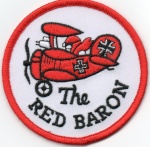
The Red Baron- Messages : 741
Date d'inscription : 01/07/2014
Age : 56
Localisation : Bordeaux

ChevyDave- Messages : 3899
Date d'inscription : 11/11/2012
 Re: Avions 1950's, futuristes et vaisseaux spaciaux - Vintage Spaceships, Starships and futuristic planes.
Re: Avions 1950's, futuristes et vaisseaux spaciaux - Vintage Spaceships, Starships and futuristic planes.
ChevyDave a écrit:J'en ai un ....

C'est pas la peine de crâner non plus!
_________________
Rien ne vaut le son du V8 le soir au coin du bois.

The Red Baron- Messages : 741
Date d'inscription : 01/07/2014
Age : 56
Localisation : Bordeaux

ChevyDave- Messages : 3899
Date d'inscription : 11/11/2012
 Re: Avions 1950's, futuristes et vaisseaux spaciaux - Vintage Spaceships, Starships and futuristic planes.
Re: Avions 1950's, futuristes et vaisseaux spaciaux - Vintage Spaceships, Starships and futuristic planes.
Mais Dave c'est un crâneur tout le monde le sais 

_________________
We don't care the People Says , Rock 'n' roll is here to stay - Danny & the Juniors - 1958
 Re: Avions 1950's, futuristes et vaisseaux spaciaux - Vintage Spaceships, Starships and futuristic planes.
Re: Avions 1950's, futuristes et vaisseaux spaciaux - Vintage Spaceships, Starships and futuristic planes.
Bin, oui, c'est connu comme le houblon ... non, le loup blanc ! 


ChevyDave- Messages : 3899
Date d'inscription : 11/11/2012
 Re: Avions 1950's, futuristes et vaisseaux spaciaux - Vintage Spaceships, Starships and futuristic planes.
Re: Avions 1950's, futuristes et vaisseaux spaciaux - Vintage Spaceships, Starships and futuristic planes.
After the second world war many military aircraft that were put into disuse. However the Boeing military transport C-97 Stratofreighter got a new lease on life as the Boeing 377 Stratocruiser, a large long-range airliner which featured some innovative features including two passenger decks and a pressurized cabin, a relatively new feature to transport aircraft. It could carry up to 100 passengers on the main deck plus 14 in the lower deck lounge. And, of course, featured a lower deck Hawaiian lounge.

Sightseers park to watch a Stratocruiser taxi across an underpass in Queens, New York, March 1951.
Photo: B. Anthony Stewart for National Geographic
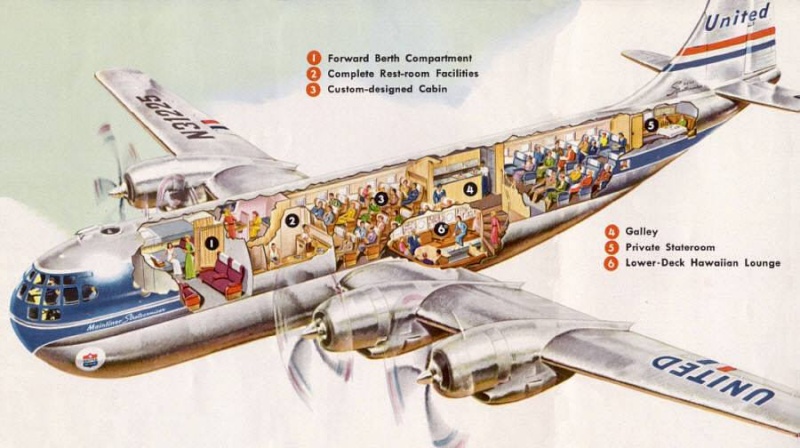
Illustration showing the areas inside the Boeing 377 Stratocruiser.

Sightseers park to watch a Stratocruiser taxi across an underpass in Queens, New York, March 1951.
Photo: B. Anthony Stewart for National Geographic

Illustration showing the areas inside the Boeing 377 Stratocruiser.
_________________
We don't care the People Says , Rock 'n' roll is here to stay - Danny & the Juniors - 1958
 Re: Avions 1950's, futuristes et vaisseaux spaciaux - Vintage Spaceships, Starships and futuristic planes.
Re: Avions 1950's, futuristes et vaisseaux spaciaux - Vintage Spaceships, Starships and futuristic planes.
Un gros navion qui part à la retraite après des années de bons et loyaux services...

_________________


 Si vis pacem, para bellum !....................................................
Si vis pacem, para bellum !....................................................
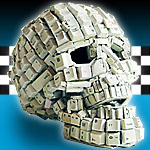
Magic-Tonio- Messages : 190
Date d'inscription : 27/02/2013
 Re: Avions 1950's, futuristes et vaisseaux spaciaux - Vintage Spaceships, Starships and futuristic planes.
Re: Avions 1950's, futuristes et vaisseaux spaciaux - Vintage Spaceships, Starships and futuristic planes.
Pour me faire pardonner...

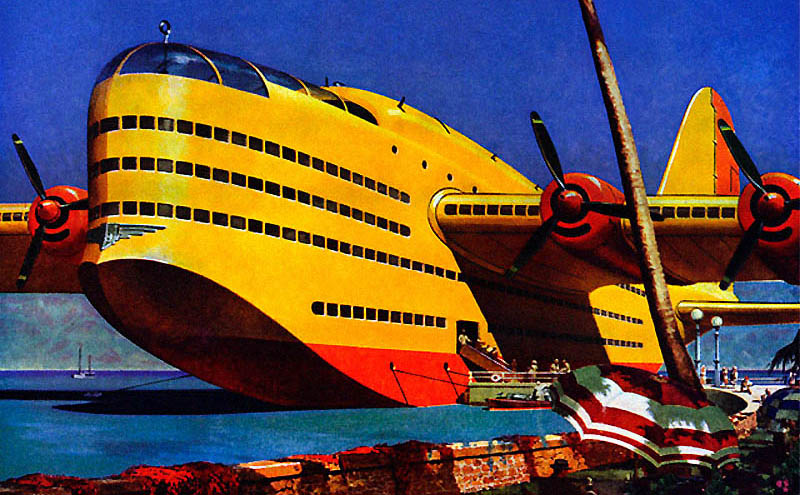
_________________


 Si vis pacem, para bellum !....................................................
Si vis pacem, para bellum !....................................................

Magic-Tonio- Messages : 190
Date d'inscription : 27/02/2013
 Re: Avions 1950's, futuristes et vaisseaux spaciaux - Vintage Spaceships, Starships and futuristic planes.
Re: Avions 1950's, futuristes et vaisseaux spaciaux - Vintage Spaceships, Starships and futuristic planes.
_________________
We don't care the People Says , Rock 'n' roll is here to stay - Danny & the Juniors - 1958
 Re: Avions 1950's, futuristes et vaisseaux spaciaux - Vintage Spaceships, Starships and futuristic planes.
Re: Avions 1950's, futuristes et vaisseaux spaciaux - Vintage Spaceships, Starships and futuristic planes.
_________________
In Old School I Trust ...

kriskap13- Messages : 112
Date d'inscription : 19/09/2013
Page 1 sur 2 • 1, 2 
 Sujets similaires
Sujets similaires» Planes & aeronautical vintage ad (avions et aéronautique)
» Futuristic & Atomic Robot - Robots futuristes & rétro
» Cars of tomorrow - plastic futuristic car - early 1950s - archer
» Vintage Concept Futuristic Streamline Marx Plastic Friction
» Garages jouets - Toys garage
» Futuristic & Atomic Robot - Robots futuristes & rétro
» Cars of tomorrow - plastic futuristic car - early 1950s - archer
» Vintage Concept Futuristic Streamline Marx Plastic Friction
» Garages jouets - Toys garage
Traditional Kustom Hot Rod and Vintage Culture and design :: Sujets Divers & variés / various topics
Page 1 sur 2
Permission de ce forum:
Vous ne pouvez pas répondre aux sujets dans ce forum
 Connexion
Connexion

